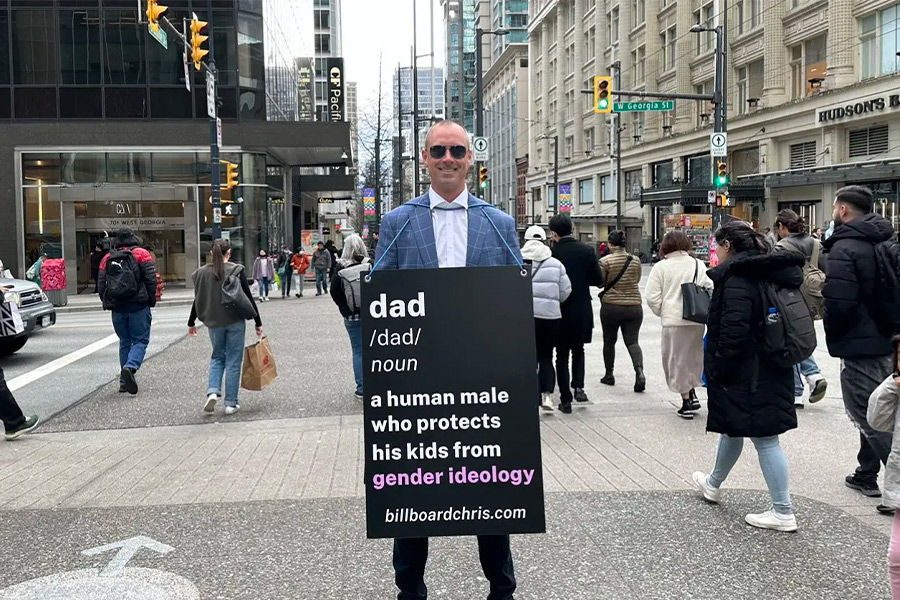
America’s democratic system was designed by our Founders with numerous checks and balances to ensure policy change is deliberative and truly representative of what the people want.
In general, new laws are enacted through the legislative process: bills are introduced by popularly elected representatives, debated, and passed by those representatives in the legislature, and then signed into law by the governor. This process is representative democracy in action: the citizens’ will is implemented by the legislators and governor they elected.
But what happens when the elected representatives refuse to enact legislation desired by the people? Well, in many states, there is an additional and lesser-known way to implement policy that ensures citizens’ voices are heard: ballot measures.
What is a ballot measure?
Unlike the typical legislative process, ballot measures are proposals that are placed on the ballot so the people can vote “yes” or “no” directly on a new law, instead of relying on an elected representative to do so. In this way, ballot measures allow the people to exercise direct democracy to implement the policies that they want in their state.
How does a ballot measure get to the ballot?
While every state has its own unique processes regarding ballot measures, there are generally two avenues for a policy proposal to make its way to the ballot:
1. Measures sent to the ballot by the legislature
Lawmakers can introduce a bill in the state legislature that, if passed, places the underlying policy proposal on the ballot in the upcoming election where voters will cast their vote to approve or reject the proposal.
2. Measures sent to the ballot by citizen-initiated signature campaigns
Citizen-initiated ballot measures—often referred to as “ballot initiatives”—are citizen-led efforts to place a policy proposal on the ballot, circumventing the state legislature completely. The process varies from state to state, but citizens collect signatures from fellow state residents asking that the proposed policy be placed on the ballot. Once the required number of signatures have been collected, the proposal is added to the ballot, usually during the next general election.
What does a ballot measure do?
Ballot measures can be used to shape state law in a few different ways:
1. Ballot measures to change state statutes
Just like legislation passed by state legislatures, ballot measures can simply add, repeal, or amend state law.
2. Ballot measures to amend the state constitution
In almost every state, ballot measures are the sole method for amending the state constitution. While the process varies in each state, a popular vote by the people is required to make changes to a state’s constitution. This is for good reason: unlike typical state laws that can be changed by the legislature from one legislative session to the next, constitutional amendments are more permanent and therefore require a correspondingly drawn-out, deliberative process in which the people play a critical role.
How is Alliance Defending Freedom involved with ballot measures?
Ballot measures cover the full spectrum of policy issues, which means citizens in all 50 states are voting directly on issues that affect religious freedom, life, free speech, and the family. While ADF monitors these wide-ranging ballot measures, in particular there has been a growing trend to take the issue of abortion to the ballot in the wake of the Dobbs decision overturning Roe v. Wade.
With the overturning of Roe, legislators and citizens have had more freedom to implement policies that protect life and truly support women. In fact, even before the Dobbs decision, there were an unprecedented number of new pro-life laws enacted, resulting in the strongest protections for life and women in over 50 years.
In response to this historic movement to safeguard the right to life, pro-abortion activists have turned to the ballot box in an attempt to enshrine a so-called “right” to abortion in state constitutions.
Using the deceptive guise of “restoring Roe,” these ballot measures go aggressively beyond even Roe’s reckless standards and make abortion a fundamental right in the state constitution, resulting in a long list of disastrous consequences for life, women, families, parental rights, and religious freedom.
ADF is committed to ensuring such radical policies that kill children and harm women are not enshrined into law or into states’ constitutions.
One of the most important ways to combat these destructive ballot measures is to speak the truth about their consequences so voters are informed when they cast their vote. The pro-abortion lobby deceives voters about what these ballot measures will do—but we know the truth.
Enshrining a right to abortion into state constitutions has far-reaching consequences, including:
- Allowing abortion-on-demand through all nine months of pregnancy, including partial-birth abortions;
- Prohibiting commonsense limits and regulations on abortion and providing legal grounds to invalidate existing pro-life laws, endangering mothers and their children;
- Undermining a state’s ability to protect many other fundamental rights, including the conscience rights of health-care providers to not participate in ending a human life, parental rights to raise and care for their children, and rights of free speech to advocate for life-affirming care;
- Authorizing a minor to obtain an abortion without parental consent or even parental notice;
- Including a broad definition for terms like “reproductive freedom” that may allow a minor to be subjected to irreversible and potentially sterilizing “gender transition” drugs and surgeries without parental consent or notice.
While ballot measures are an important part of our democracy, it is critical that we share the truth about the devastating effects of the initiatives being pushed by radical pro-abortion activists—and that we show up on Election Day to cast our vote to protect life.






